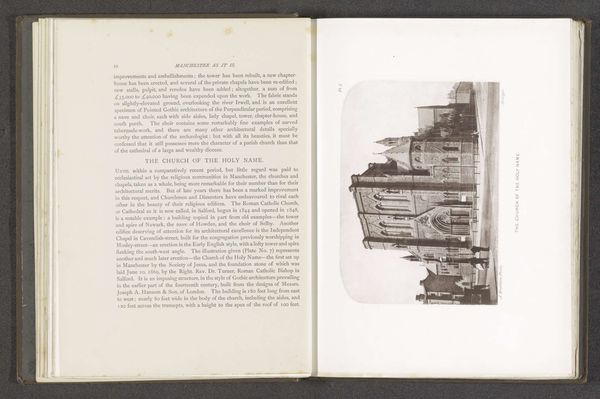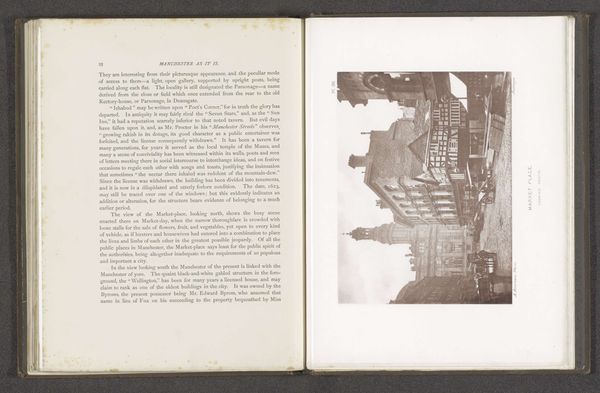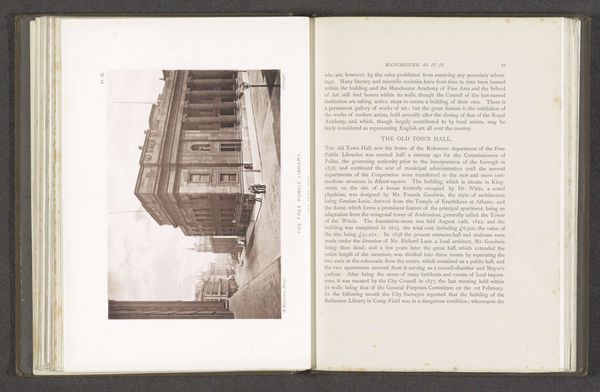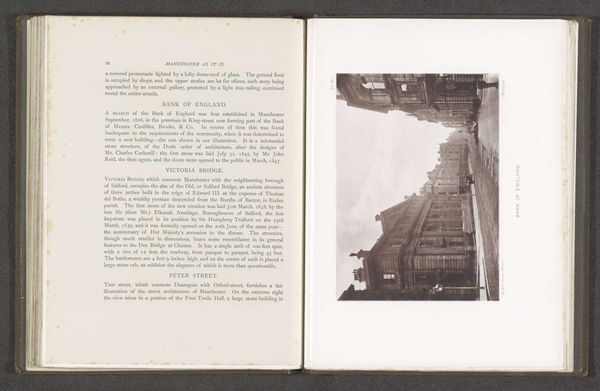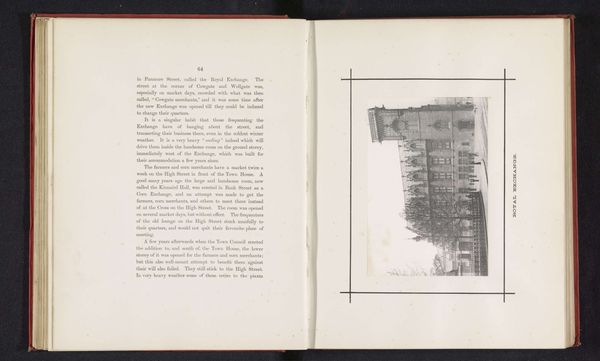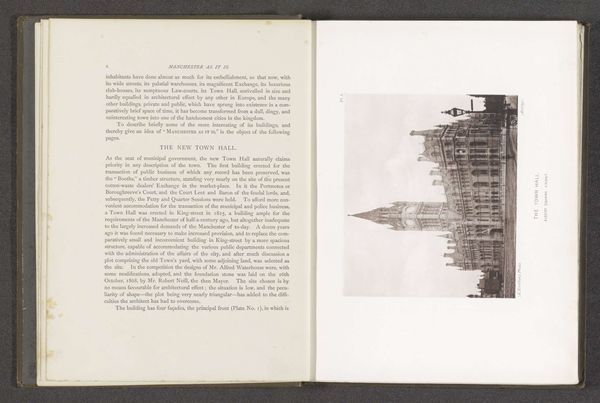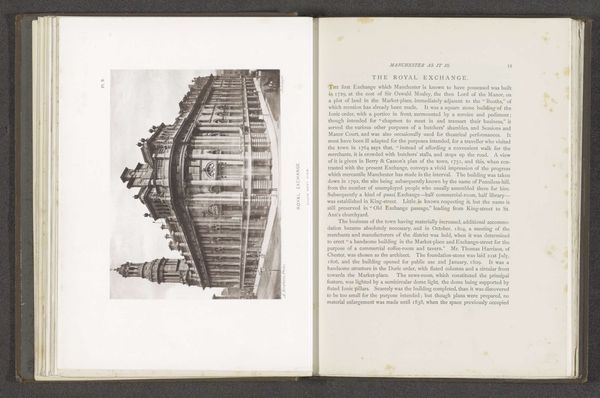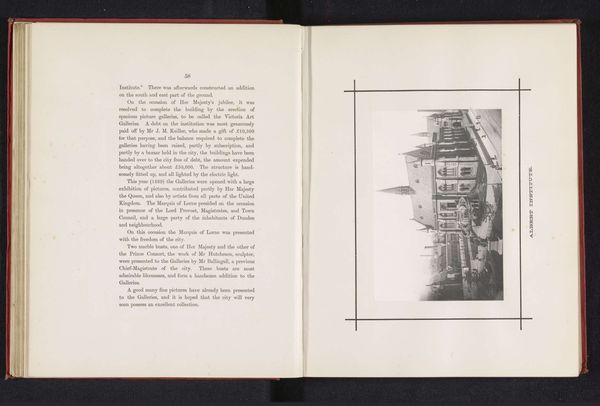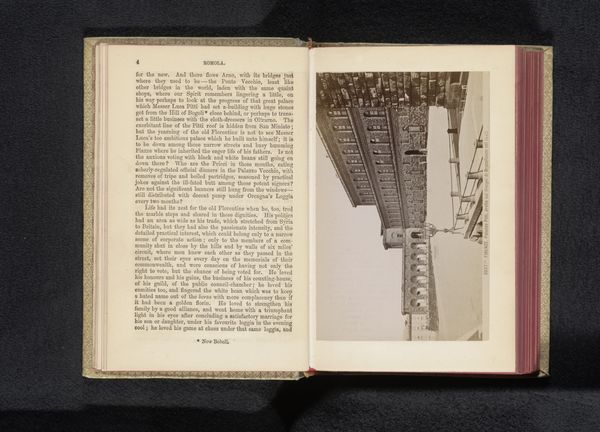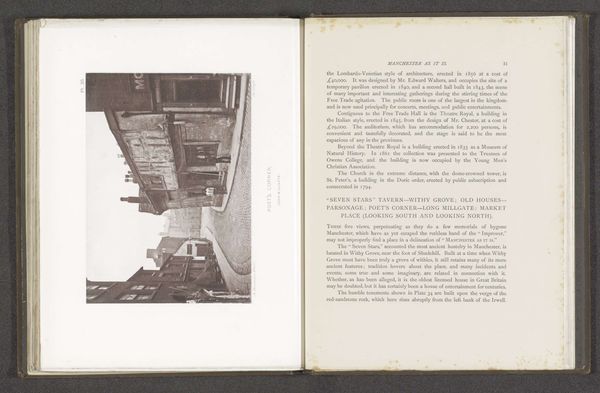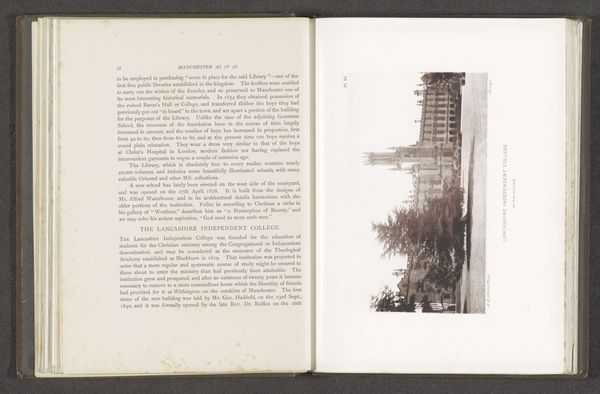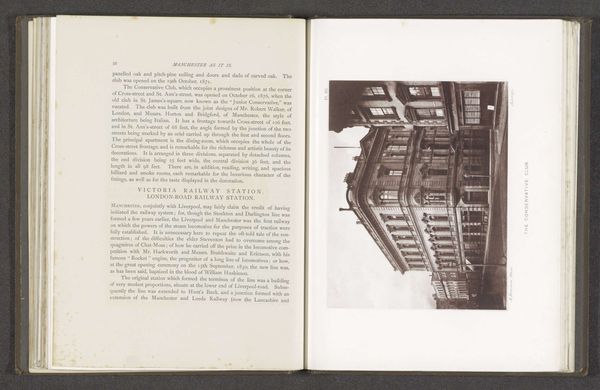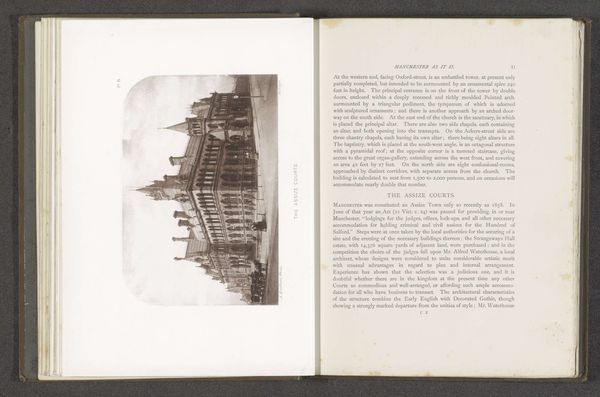
print, photography, albumen-print
# print
#
photography
#
cityscape
#
albumen-print
#
building
Dimensions: height 140 mm, width 191 mm
Copyright: Rijks Museum: Open Domain
Editor: Here we have "Gezicht op de Royal Exchange in Manchester," a photograph by Alfred Brothers, dating from before 1878. It’s an albumen print in an album. I’m struck by the starkness of the building; it almost seems to loom. What do you see in this piece? Curator: What immediately captures my attention is how this image documents the industrial revolution’s impact through the materiality of this new financial center. Consider the physical labor involved in constructing the Exchange itself and in producing the photographic print. What raw materials were extracted and transformed? What kind of working conditions made that possible? Editor: So, it’s less about the aesthetics of the building itself, and more about what the photo represents? Curator: Precisely! Think about the very act of creating an albumen print. Egg whites were used to coat the paper, a rather laborious and delicate process. It wasn’t mass reproducible like photography is today. It raises the question: who had access to such a process? What social class are we seeing represented here through both labor and luxury? Editor: That’s a fascinating angle. I hadn’t thought about the production process as a reflection of societal structures at the time. Curator: And beyond the photograph, what function did the Royal Exchange serve? How did it facilitate and regulate the flow of capital, and what were the social consequences of this activity in Manchester? How were the labor practices inside related to practices on the outside? Editor: It’s interesting to see the architecture, the photography, and the economics all intertwined. Curator: Yes, this photograph isn't just a document of a building, but a testament to a particular moment in industrial history and a complex system of labor and materiality. We can discuss how consumption impacts labor, going far beyond this image alone. Editor: I learned a lot about viewing the context that informed it, rather than the image itself.
Comments
No comments
Be the first to comment and join the conversation on the ultimate creative platform.
